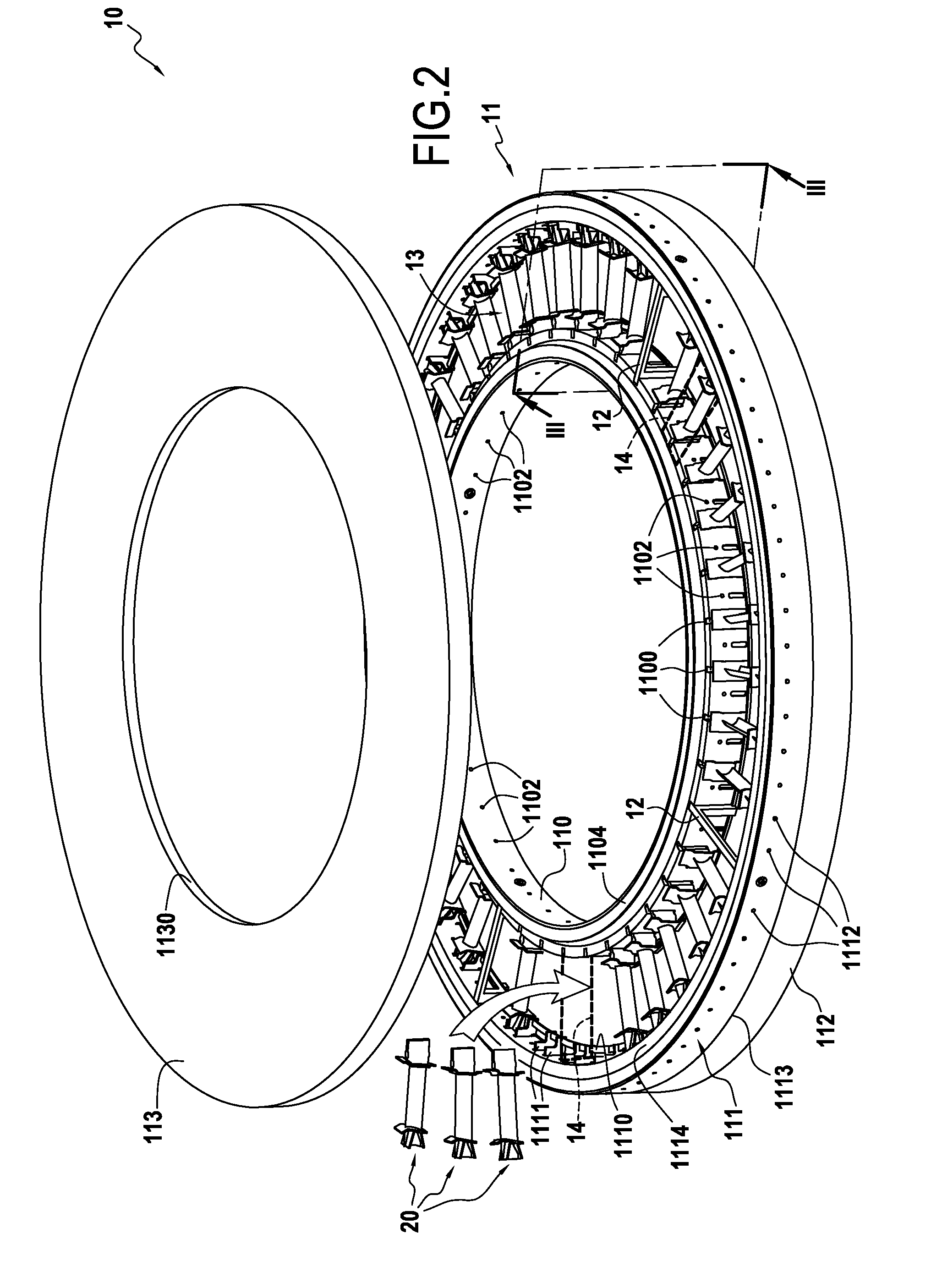Device for Loading Porous Substrates of Three-Dimensional Shape in Order to be Densified by Directed Flow Chemical Vapor Infiltration
a three-dimensional shape, directed flow technology, applied in the direction of chemical vapor deposition coating, metallic material coating process, coating, etc., can solve the problems of not being able to meet the requirements of densification substrates, and not being able to achieve uniform densification of substrates. achieve the effect of minimizing densification gradients and high loading capacity
- Summary
- Abstract
- Description
- Claims
- Application Information
AI Technical Summary
Benefits of technology
Problems solved by technology
Method used
Image
Examples
Embodiment Construction
[0040]FIGS. 1 to 3 show a loader device or tooling 10 that, once loaded with substrates for densifying, is to be inserted in a reaction chamber in an industrial installation for chemical vapor infiltration. In the presently-described example, the tooling 10 is designed to receive fiber preforms 20 for aeroengine blades.
[0041]Each preform 20 extends in a longitudinal direction between two ends 21 and 22 and comprises an airfoil 120 and a root 130 formed by a portion of greater thickness, e.g. having a bulb-shaped section that is extended by a tang 132 (FIG. 3). The airfoil 120 extends in a longitudinal direction between its root 130 and its tip 121 and in cross-section it presents a curved profile of varying thickness defining two faces 122 and 123 that correspond respectively to the suction side and to the pressure side of the airfoil 120. In the presently-described example, the airfoil 120 also has an inner platform 140 for the blade and an outer platform 160 for the blade.
[0042]Th...
PUM
| Property | Measurement | Unit |
|---|---|---|
| three-dimensional shapes | aaaaa | aaaaa |
| radial dimensions | aaaaa | aaaaa |
| shape | aaaaa | aaaaa |
Abstract
Description
Claims
Application Information
 Login to View More
Login to View More - R&D
- Intellectual Property
- Life Sciences
- Materials
- Tech Scout
- Unparalleled Data Quality
- Higher Quality Content
- 60% Fewer Hallucinations
Browse by: Latest US Patents, China's latest patents, Technical Efficacy Thesaurus, Application Domain, Technology Topic, Popular Technical Reports.
© 2025 PatSnap. All rights reserved.Legal|Privacy policy|Modern Slavery Act Transparency Statement|Sitemap|About US| Contact US: help@patsnap.com



